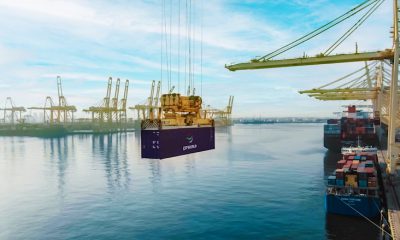From a business perspective, keping track of time clock when and how long your employees work is important; you want to make sure they’re getting paid accurately for the hours they put in—and that you aren’t under or overpaying your team.
But keeping track of your hourly workers and non-exempt employees’ hours is more than just a good business practice. Under the federal Fair Labor Standards Act (FLSA) and individual state labor laws, keeping records of your employees’ work hours is actually a legal requirement.
But what are the time clock rules for hourly employees? What information do you need to keep track of? How do you need to track that information? And what are you required to do with that information once you have it on record?
Which employees’ hours do you need to track?
First things first—before we jump into all-things time tracking, let’s quickly cover which employees’ time you actually need to track.
If you have hourly employees, you absolutely need to track their hours. But where business owners sometimes get confused is when it comes to salaried employees.
When it comes to salaried employees, you may or may not need to track their hours; it all depends on whether they’re exempt or non-exempt. Exempt salaried employees aren’t eligible for overtime pay—and, as such, there’s no need to track their hours. Non-exempt salaried employees, on the other hand, are eligible for overtime pay—so even though they’re paid salary, you need to keep a record of their hours to determine if and when you need to pay them overtime.
Now that you know which employees’ time you need to track, let’s jump into the must-know time clock rules for hourly employees and non-exempt employees:
Have your employees clock in and out
As an employer, you’re required to keep accurate records of both the number of hours worked per workday and total hours worked per workweek for each non-exempt or hourly employee that works for your business. And the easiest way to keep track of your employees’ work time? Having them clock in and out each day.
Technically, there’s no required timekeeping system; according to the United States Department of Labor (DOL), “Employers may use any timekeeping method they choose…Any timekeeping plan is acceptable as long as it is complete and accurate.” That means you can track your employees’ hours using digital time tracking tools, a punch card system, written time cards or timesheets, clocking in and out via an app on their mobile phone…whichever system feels the most intuitive for your business.
Whatever system you use, the important thing is that your employees clock in and out every day—and that they clock in and out when they actually start and stop working. That will ensure accurate recordkeeping for your business—and make sure you’re in compliance with FLSA regulations.
Use time clock rounding correctly
Under the FLSA, employers can choose to track employees’ time in 15-minute increments—and if an employees’ actual hours worked falls outside of those increments, you can round to the nearest quarter-hour. Just make sure you’re rounding to the closest quarter hour; so, for minutes 1 to 7, you’d round down—and for minutes 8 through 14, you’d round up.
For example, let’s say you have an employee show up for work at 8:09am. Instead of setting their clock-in time at 8:09am, you could round up to 8:15am. If they showed up at 8:06, however, you would round down to 8:00am.
Pay overtime for anything over 40 hours (and know how much overtime you have to pay)
Not only are you required by federal law to pay overtime, but California also has strict rules on overtime pay for nonexempt employees. Under California state laws, you’re required to provide overtime pay of one-and-a-half time the hourly or nonexempt employee’s regular rate of pay for:
Working more than eight hours (but less than 12 hours) in a single day
- Working more than 40 hours in a week
- The first eight hours worked on the seventh day of consecutive work in a workweek
You’re required to up that overtime pay to double the employee’s regular rate of pay for:
Working more than 12 hours in a single day
- Any hours in excess of eight hours worked on the seventh day of consecutive work in a workweek
If your employees are putting in hours above and beyond the standard eight hours a day, 40 hours a week, be prepared to compensate them for their time with overtime pay.
Never, ever let hourly or non-exempt employees work off the clock
Under the FLSA, it’s against federal law for hourly and nonexempt employees to work off the clock. And allowing nonexempt employees to work off the clock—whether you ask them or they volunteer—can lead to serious issues for your business, including lawsuits.
Where business owners run into trouble is understanding what “working off the clock” actually means. Your employee is working off the clock if they perform any job-related tasks without their time worked being recorded—and without being compensated for that time.
So, for example, let’s say you own a construction business and your team is working onsite at a client’s home. If one of your employees has to hang back at the end of the day and answer the clients questions for an hour, that’s time worked—and it needs to be recorded and paid for. If it’s not, it’s considered working off the clock.
Or maybe you’re hosting a networking event at your business and a few employees volunteer to come in early to help you set things up. Even if that kind of work falls outside of their typical job tasks (and even though they volunteered), you’re still asking your employee to perform additional work and put in additional hours—and, as such you’ll need to track and pay for that time.
The point is, if you ask or allow your employees to work off the clock, not only are you breaking wage laws, but you’re also putting your business at risk for a lawsuit—so make sure both you and your employees are clear on what “working off the clock” means and that any hours worked are accurately tracked, recorded, and paid out.
Understand working on-call—and what that means for your employee hours
Depending on your business type, there might be times when you need your employees to be on-call. But do you need to provide on-call pay for those hours?
The answer is: it depends.
Under California law, if your employees are on “restricted on-call duty”—meaning they’re required to be on the work premises or in a location that would allow them to get there within 15 minutes—they need to be paid at least minimum wage for any time spent waiting for an authorized call to work. If they are called into work, they need to be paid their regular hourly rate for any time spent responding to the authorized work call, including travel time. (In terms of time tracking, employees will need to clock the time they spend waiting for the call and the time they spend responding to it separately.)
If your employees are on “unrestricted on-call duty,” that means they’re free to engage in personal activities while on-call; as such, that time isn’t considered work time and no on-call pay is required. If they end up being called into work, again, they’re paid their regular hourly rate for any time spent responding to the call, including travel time (or a minimum of two hours—whichever is greater).
It’s important to understand the rules around on-call work, including how to track on-call time and when on-call pay is required; that way, you can keep proper records—and make sure your employees are compensated with on-call pay when necessary.
Stay on top of these time clock rules for hourly employees
Understanding time clock rules for hourly employees and accurately tracking your nonexempt employees’ time is a must. Not only is time tracking important to ensure your employees are paid fairly (including overtime and on-call pay), but it’s also important to protect your business and ensure you’re compliant with all FLSA and state labor laws.
At Hourly, we make it easy for business owners to track their employees’ time. With the Hourly app, you can enable mobile clock-ins, see who is working in real time, make sure you’re compliant with labor laws by tracking overtime pay and enforcing required breaks, and collect signed timesheets from your team—all with a few swipes on your smartphone.


























